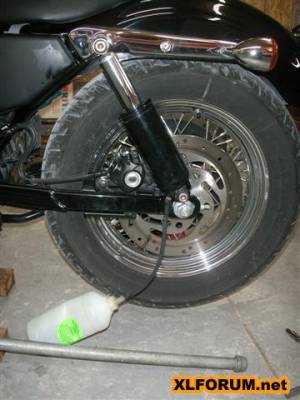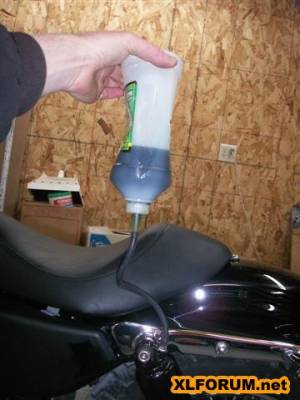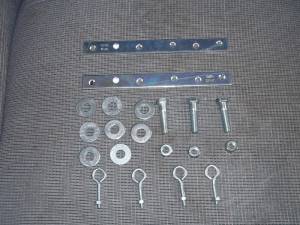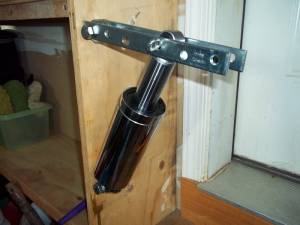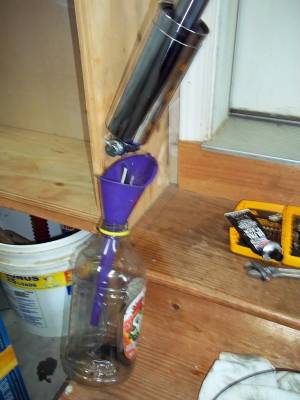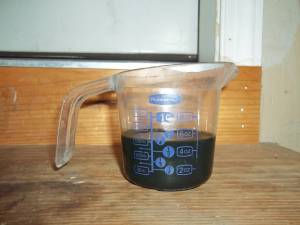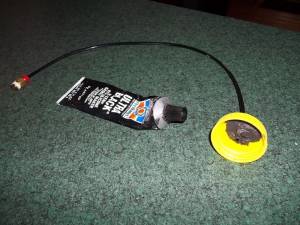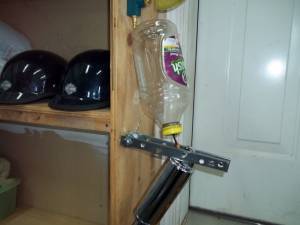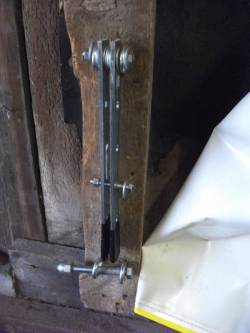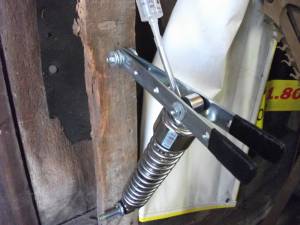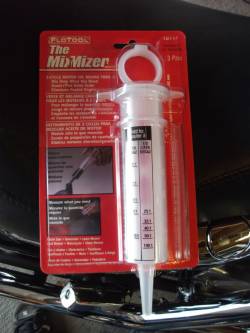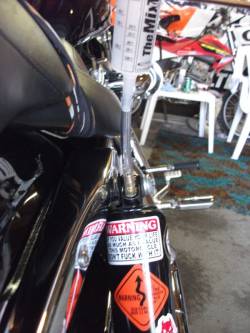Table of Contents
This is an old revision of the document!
REF: Tools - 137
Rear Shock Tools
Road King Shocks
The shocks are a really simple design. 1)
Think of it as nothing but a strut assembly like the ones used on cars but with internal springs and a separate air/fluid chamber.
The main shaft is hollow and that is where damper is located.
At the top of the damper are the damper fluid holes.
If you don't have the correct fluid level it creates problems.
Too little oil and the dampers may not be filled with oil which reduces the dampening action.
Too much oil you create a hydro-lock situation where there's too little room for the shaft to compress into the shock.
The springs and air pressure only support the weight of the bike and rider.
One other internal item is the rubber bottom stops. On older shocks they have a tendency to turn to mush.
When this happens, the loose gooey material can work it's way into the damper holes plugging them up and restricts the flow.
Road King Shock Oil Replacement
- If your using Road King shocks, here is a way to change the oil in them.
- Removing oil: Install the valve stems with the valve cores removed. Connect a piece of vacuum hose between the valve stem and a partially collapsed plastic bottle. Install only one shock upside down. Sit on the bike to force the oil out. Raise the bike to draw air in. 2)
- Installing oil: Add the proper amount of fork oil in your weight of choice to the partially collapsed plastic bottle. Install only one shock right side up. Sit on the bike to force air out. Raise the bike to draw oil in. 3)
- Caution You need to turn them upside down and then back right side up a few times to get the oil to drain from the inner chambers. Do not over fill them, they could blow apart. Put on one shock at a time and make it bottom out and force out all excessive oil, that is still too much because the inner air chamber will still be too small. The only way to tell how much oil is in them is by weighing them. There are several different years and models of shocks and no one knows all the specific differences. 4)
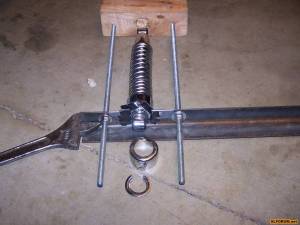 |
| Homemade spring compressor 7) |
Another Method
Article and pics by LuxBlue of the XLFORUM 8)
Parts:
- Eye bolts.
- 1/2“ X 2 1/2” bolts and nuts.
- 1/2“ washers.
- 2 shelf straps to act as levers.
- A piece of 3/4” plywood.
Drill holes in the shelf side and place the bottom eyebolts with a 1-1/8“ gap between them to allow the shock eyes to fit between them.
Drill out the end holes of the straps for a 1/2” hole (if the holes are too small as purchased).
These measured up just under 12“ (12” eye to eye) for the top eyebolts which are placed 1-1/8“ apart.
Using washers, space out the inside of the eyes.
Run a 1/2” bolt through a shelf strap, through the first eye bolt, through the washers and the second eye bolt and through the other shelf strap.
Loosely secure it with a 1/2“ nut.
Invert the shock, remove the plastic hose quick connector and place a funnel in a plastic bottle under the shock hole to catch the fluid.
Only a small amount of fluid may run out.
Stroke the shock (foot on the shelf strap levers) and push down with your body weight.
On every stroke, more fluid is pushed out. Continue until the gurgling stops and only air is expelled.
6 ounces of dirty hydraulic fluid was collected below (plus about an ounce was spilled) otherwise.
Empty the fluid, invert the shock in the lever apparatus and fill the shock with fluid.
A plastic juice bottle was used below with a hole drilled in the lid to accomodate a piece of air shock plastic hose.
Then the hole was sealed with black RTV and allowed to cure fully.
Then place the 1/8” NPT quick connect in the shock, add the amount of fluid that was removed.
Install the lid, place the hose in the quick connect and invert the bottle.
By stroking the shock it pushes air out into the bottle and when the shock retracted, fluid is pulled in.
Numerous compressions pulled all 6 ounces of fluid into the shock.
Then remove the quick connect, re-tape with teflon tape and re-install in the shock.
Repeat for the other shock, pressure test them (these were tested overnight with 20 psi).
And install them on the bike.
Using a MixMizer
Article by joesporty of the XLFORUM http://xlforum.net/forums/showthread.php?t=1038905&page=3))
This compression tool is made similar to the one above.
Mending braces, four screws in eyelet hooks and a couple nuts, bolts and washers.
The eyelets are screwed into a stud on the wall with the mending braces attached.
See the mock-up below using an old stock shock.
The MixMizer is a little syringe type tool (cheap at under 5 bucks) that was used for filling the RK shocks back up.
It comes with a little hose that fits perfect over the air valve.
It only holds 2 ounces so you'll have to keep refilling it until the proper amount of oil has been added.

